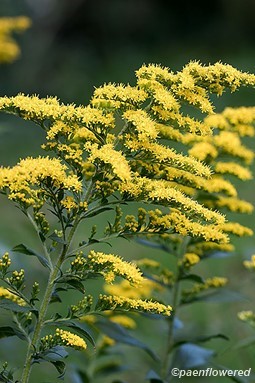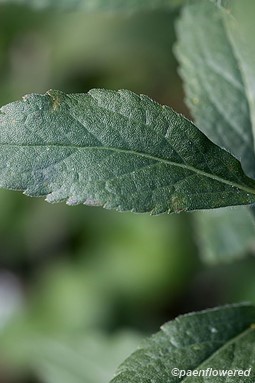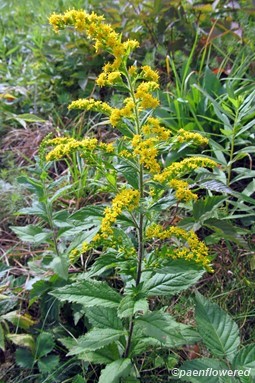Solidago rugosa
A common goldenrod with plume-like flower clusters and densely-haired stem
Solidago rugosa wrinkleleaf goldenrod
This goldenrod may seem a lot like the other species that are blooming at this time. It is true that many goldenrod species differ only in small details and it takes patience and detailed examination to distinguish them - if you care to do so. All goldenrod species are members of the extensive aster family.
The rough-stemmed goldenrod has plume-like flower clusters like similar species but has a densely hairy stem. The deeply toothed leaves are feather-veined, wrinkled, and also hairy, especially along the veins on the undersurface. The leaves are also broader than those of most other goldenrod species. The lower leaves taper into a long margined stalk.
In practice, the size, shape, and form of the plant and leaves are quite variable and sometimes the flower clusters assume an elm-like shape. Smaller plants may have a rod-like flower cluster. There are five recognized subspecies and all can be found in Pennsylvania. The individual composite flowers are quite small (1/8 inch in diameter). Each has 6-10 yellow ray florets and 20-30 disk florets. A variety of insects serve as pollinators.
Normally the plants grow 1-7 feet tall. The rough-stemmed goldenrod is common and widespread in thickets, along roadsides, and on the banks of streams and lakes. They prefer full sunlight and so are often found in open places. They are found throughout eastern North America in the appropriate habitats and is found in every county in Pennsylvania. The blooming period is July to October, depending on latitude. Alternate common names for this species are wrinkleleaf goldenrod, rough goldenrod, and roughleaf goldenrod (though the later name also is applied to another species).
Habitat & Range
Common in fields, woods, floodplains, roadsides, and waste grounds.
Present throughout the state.
| EMP: | FAC |
|---|---|
| NCNE: | FAC |
Phenology
Flowers August through November.
Plant Codes
S-rank: S5 (Secure)
G-rank: G5 (Secure)















Comments
Have you spotted this plant in your area? We'd love to hear about your experience! Share your comments or questions about the plant below. Comments are moderated before posting.